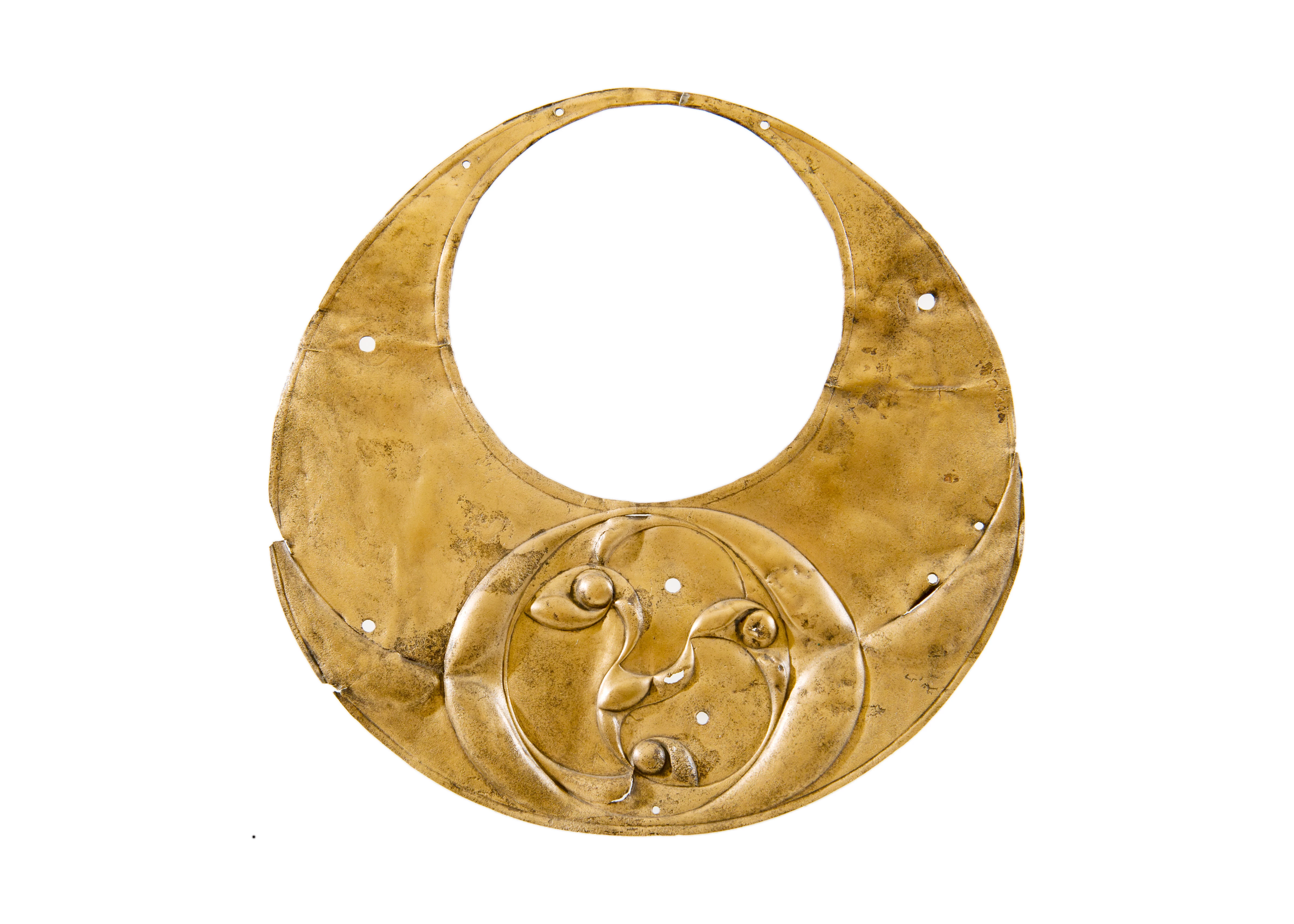Later Prehistory
The objects in these collections were used by societies who developed the use of metals, and made artefacts of copper, bronze and gold and later iron. They once belonged to the people who lived in Wales after 2,500 BC and until the middle of the first century AD.
Ceremonial and burial evidence dominates the records of the early part of this time. New burial practices involved individuals being cremated and buried within pottery urns beneath large mounds of earth, known as barrows. These farming peoples probably settled temporarily in different parts of the landscape, moving to different locations with their flocks and herds of domesticated animals according to the seasons of the year.
Copper and gold was mined, smelted and worked in Wales during the second millennium BC, as evidenced by recent discoveries of prehistoric copper mines, and also by the frequent finds of bronze tools and weapons, and torcs and bracelets of gold. These were used in long-distance exchange networks between different societies. Many were also probably ritually deposited in gift giving practices to the gods.
Societies from 1200 BC onwards left increasingly visible traces of settlement, suggesting that communities farmed territories more intensively at this time. Hillforts with impressive ramparts were built, and were sometimes densely occupied by buildings. They were built and used by sizeable communities; however, they might have served a variety of purposes, such as acting as defensive settlements, temporary refuges at times of crisis, exchange centres or religious and social meeting places. Many people lived in roundhouses on small enclosed farmsteads, and their everyday occupation left small collections of durable artefacts, for example spindle whorls, quernstones for grinding corn or iron tools.
A distinctive Celtic or La Tene art style was adopted by people over large parts of Europe from 400 BC onwards, and evidence of this fluid creative style has been found on bronze metalwork in Wales. At the same time, iron had become a valued and frequently used metal. The technical and artistic achievements of Celtic bronzeworkers and blacksmiths are abundantly visible on the outstanding examples of metalwork held in our collections. Their style and appearance symbolise very different ways of thinking about the world.
